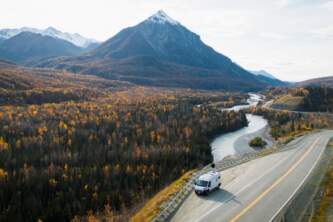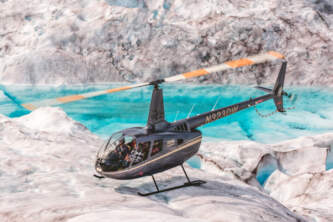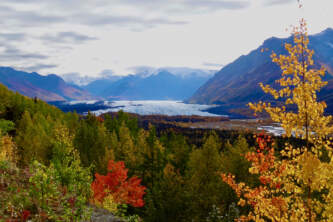Hiking Bomber Glacier
Hike to Bomber Glacier and explore the remains of a US Airforce bomber that crashed in the mountains of Alaska during a training mission.
A Training Mission Gone Wrong
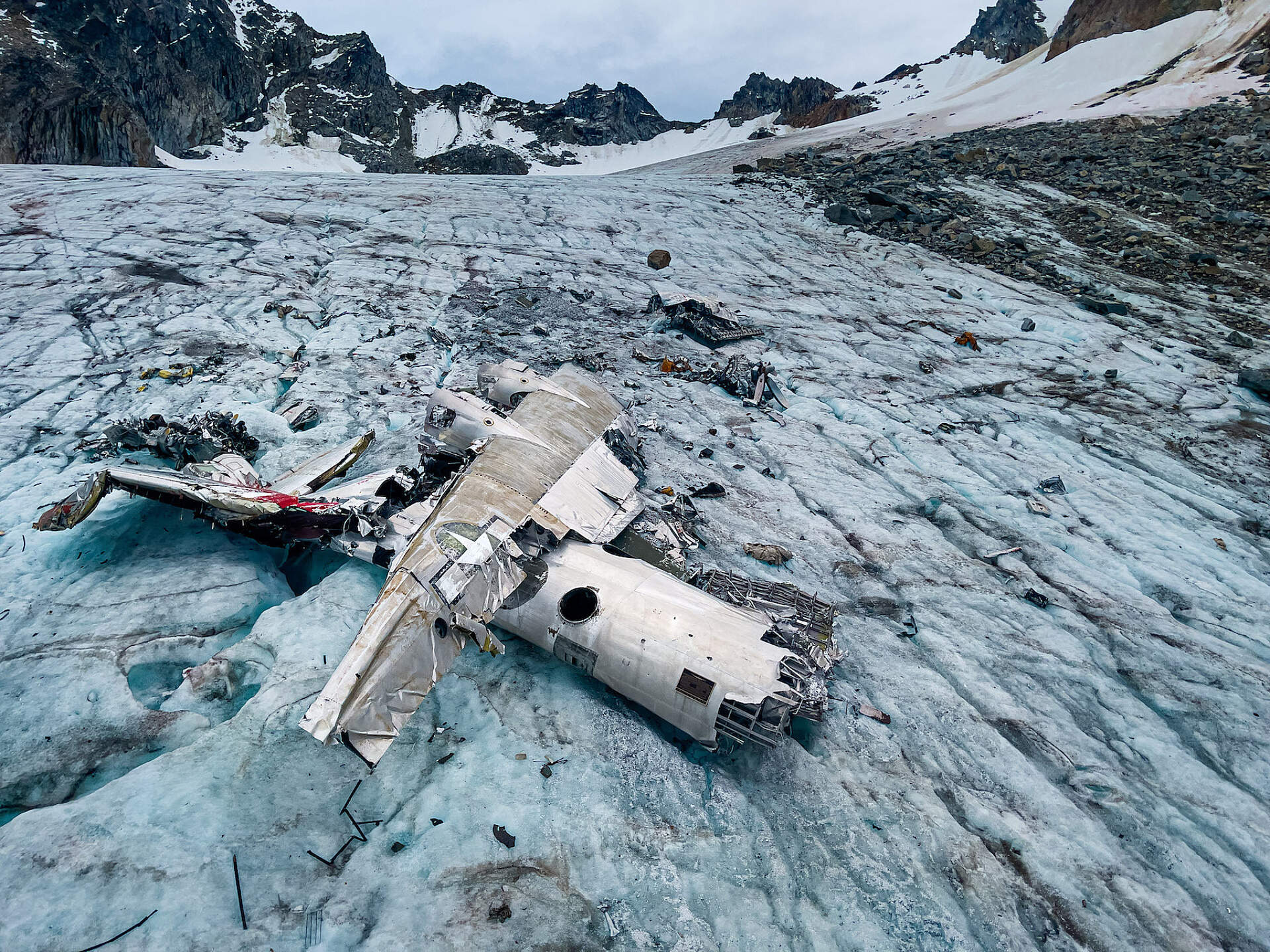
Photo by Bob Kaufman
It had been a routine training mission for the bomber crew in 1957, but when they got out over the wilderness north of Palmer, they suddenly found themselves off course. The plane was buffeted by strong winds, and the pilots worked hard to get the craft back on track. But they never made it. The plane crashed into a glacier just 27 miles from home base. The crash left a gaping wound in the glacier, and the wreckage of the plane was scattered across the icy terrain. For years, the crash site remained undisturbed. But eventually, a path was created that took hikers directly to the wreckage.
A Hike to the Crash Site
Nestled behind a wall of stone in one of Alaska's most rugged yet accessible mountainous regions rests the plane, which has become a popular destination for hikers who seek the ultimate Alaskan experience.
Start by taking the Reed Lakes Trailhead in Hatcher Pass, which takes you up a broad, forested river valley and past an abandoned mining village. The trail is well maintained, and parking is available in the lot at the trailhead. Bring waterproof hiking boots and scramble through a jumble of boulders to two alpine lakes, Upper and Lower Reed Lakes, with views to the south side of Lynx Peak and mountains surrounding you on all sides. Continuing up the steep terrain, you will reach Bomber Pass, where you can step onto the glacier and make your way down to the crash. While the glacier is icy (especially later in the season), it is easy to navigate with poles and some traction on your boots and doesn't feature any large crevasses.
For the Experienced Hiker
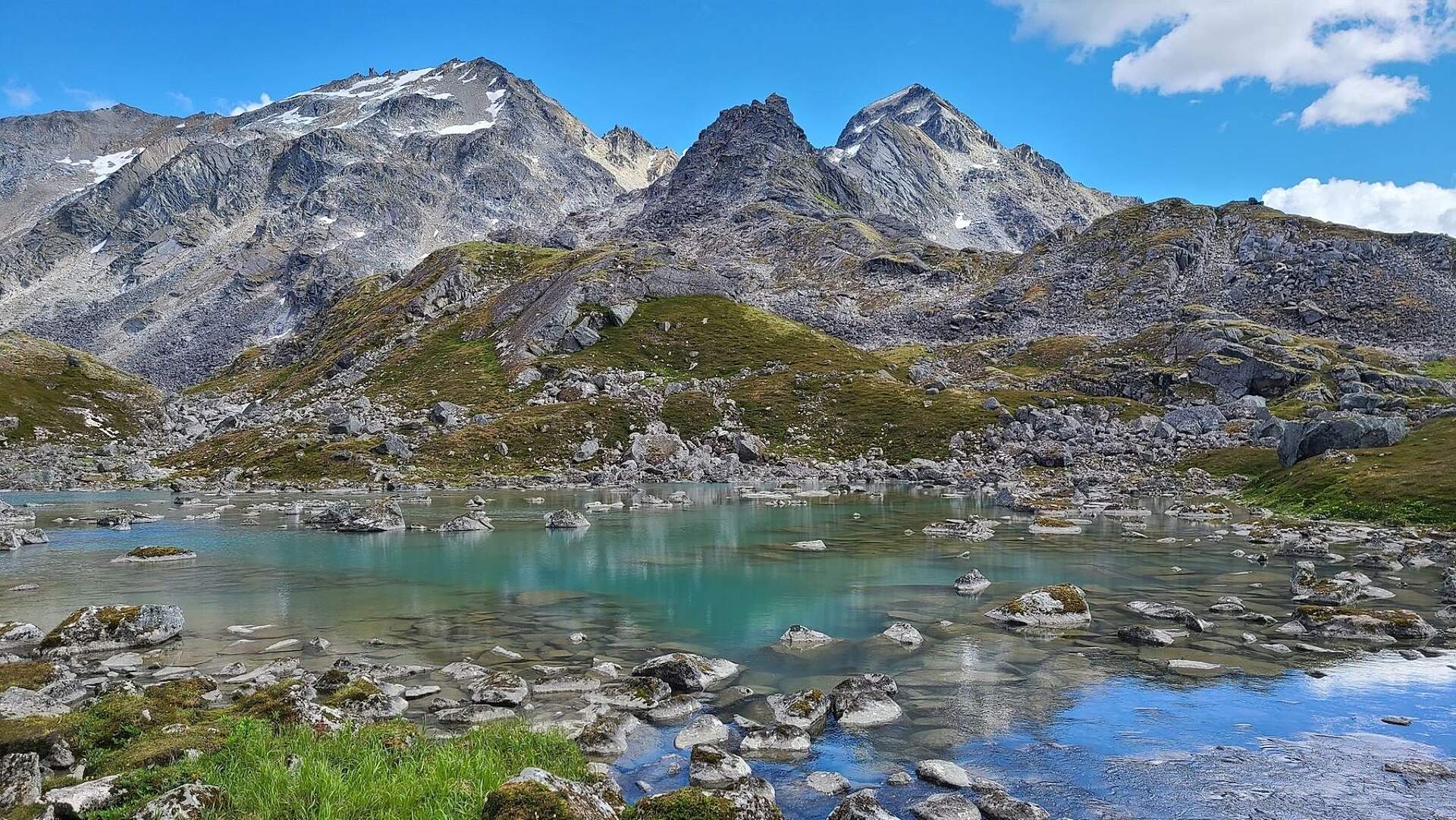
Photo by Anna Herlocker
The trail is 12 miles out and back, taking roughly 7 hours to complete, and you’ll gain over 3,500 feet of elevation, so this hike is best suited for the more experienced hiker.
The Wreck Site
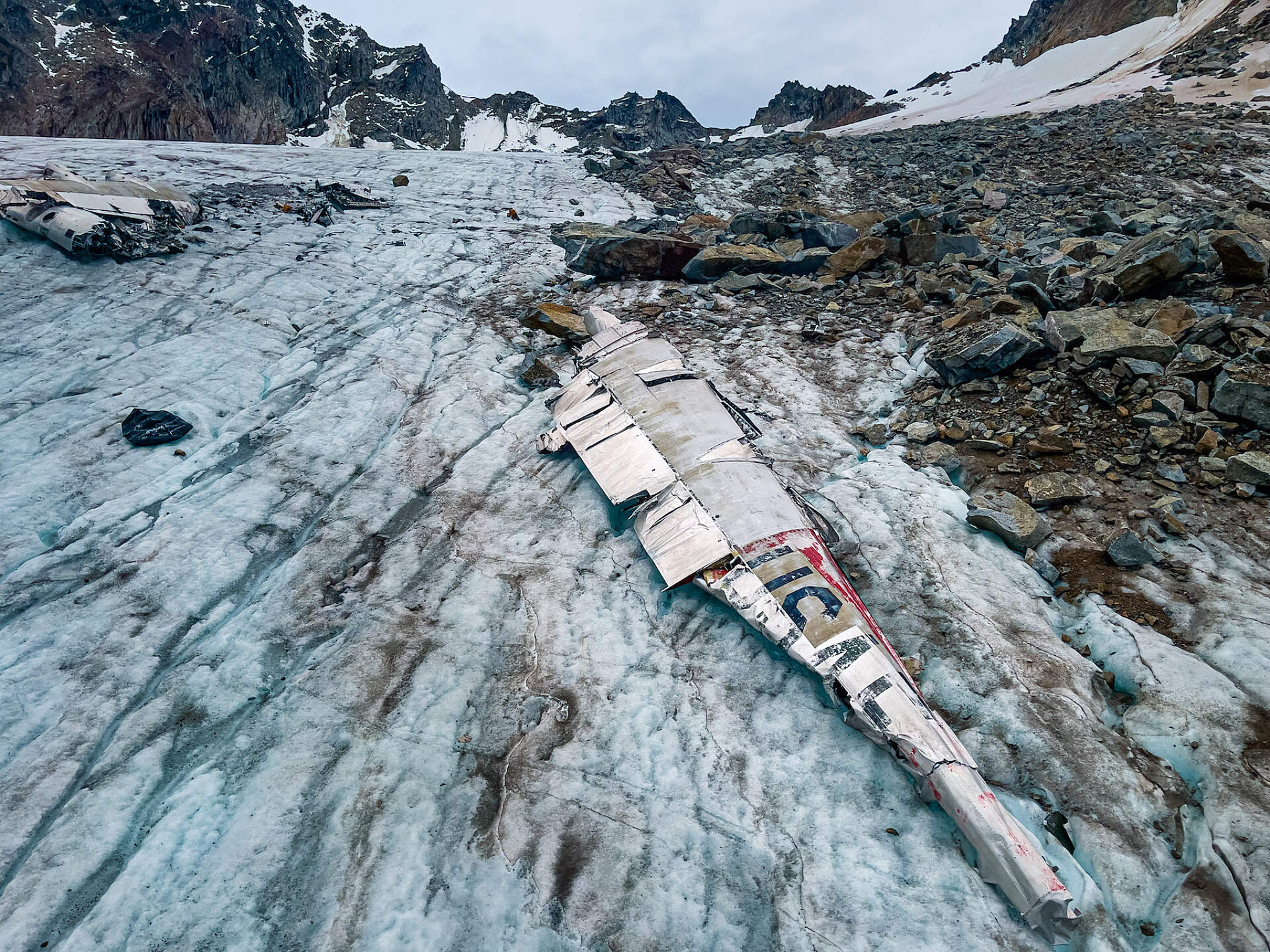
Photo by Bob Kaufman
Hikers can take a trek across the glacier to find the wreck site, where the main fuselage of the airplane is submerged in the icy landscape. "U.S. AIR FORCE" lettering is still visible across the body and wings, though one of the wings lies separate from the main wreck, torn away on impact. The cockpit and nose of the aircraft have been smashed further up the glacier. Scattered around the area are the engines and landing gear, as well as various controls, wires, and other aircraft parts. Be sure to take a moment to read the plaque affixed to the body of the aircraft, a memorial to those who didn't survive the crash.
A Multi-Day Hike
Experienced overnight backpackers can opt for the Mint-Bomber Traverse, which connects the Mint, Bomber, and Snowbird Huts for a multi-day trek through the valleys. With the Bomber Hut located at the northern end of the valley leading to the Bomber Glacier, the plane is a convenient day hike for those taking the additional time to explore the region.
When to Go
Early summer is best to avoid the rain, but the trail is popular even in the wintertime. There aren’t any services nearby, so be prepared to bring everything that you need with you. And remember to leave no trace when you explore Alaska’s backcountry!


